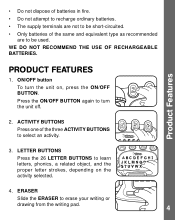

6 is a flow diagram that describes steps in a method for determining attributes of haptic feedback in accordance with one or more embodiments.įIG. 5 is a flow diagram that describes steps in a method for determining whether a haptic feedback is to be generated based on an external haptic event or an internal haptic event in accordance with one or more embodiments.įIG. 4 is a flow diagram that describes steps in a method for causing output of haptic feedback in accordance with one or more embodiments.įIG. 3 depicts an example implementation scenario for an application that does not directly support haptic feedback in accordance with one or more embodiments.įIG. 2 illustrates an example implementation scenario for an application that supports haptic feedback in accordance with one or more embodiments.įIG. 1 is an illustration of an environment in an example implementation that is operable to employ techniques discussed herein.įIG. The use of the same reference numbers in different instances in the description and the figures may indicate similar or identical items.įIG. In the figures, the left-most digit(s) of a reference number identifies the figure in which the reference number first appears. The detailed description is described with reference to the accompanying figures. For instance, techniques described herein enable haptic feedback to be provided whether or not a particular functionality directly supports haptic feedback. According to various embodiments, how haptic feedback is initiated depends on whether different functionalities directly support haptic feedback. Generally, haptic feedback is provided for different user interactions with a touch input device, such as interactions with applications, services, and so forth. Techniques for haptic feedback for a touch input device are described. This Summary is not intended to identify key features or essential features of the claimed subject matter, nor is it intended to be used as an aid in determining the scope of the claimed subject matter. This Summary is provided to introduce a selection of concepts in a simplified form that are further described below in the Detailed Description. While haptic feedback can be leveraged in a variety of scenarios, it can be difficult to comprehensively incorporate across different applications and services that may not have the ability to invoke haptic mechanisms.

Such haptic feedback represents a tactile reinforcement that the user has successfully selected the virtual button, and may be combined with other types of feedback (e.g., visual and audio feedback) to increase the perceptibility of certain actions and functionalities. For instance, a touchscreen may employ a tactile device (e.g., a piezo-electric device) to provide a localized vibration when a user presses a virtual button displayed on the touchscreen. One particularly useful type of feedback is haptic feedback, which provides tactilely-perceptible feedback via various mechanisms. In another example, audio feedback can be presented to indicate an incoming communication, such as a new instant message.

For instance, when a user hovers a cursor over a hyperlink, visual feedback can be presented that indicates that the hyperlink is selectable to navigate to a particular network location. Modern computing devices utilize a variety of different types of feedback to indicate to users that certain functionalities are available and that certain actions are occurring or about to occur.


 0 kommentar(er)
0 kommentar(er)
